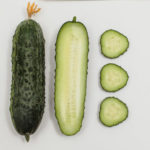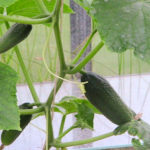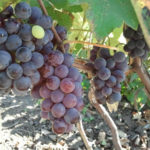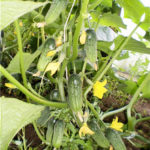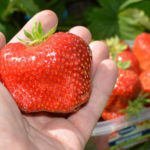Hydrangea paniculata Magical candle
Of all the existing varieties of hydrangea, paniculata is the most memorable. It's all about the spectacular appearance, due mainly to the shape, size and shade of the inflorescences. The variety Magic Candle may be of particular interest to the grower. Having seen him once, you will certainly want to have such a miracle in your garden.
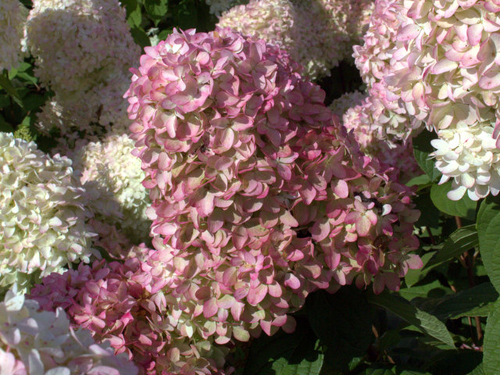
Description
The name of this culture fully reflects its beauty and originality. It is translated from English as "magic candle". Indeed, lush pyramidal inflorescences on vertical peduncles evoke just such an association. Among florists, the short name of the variety "Magic" is also widespread.
This type of panicle hydrangea belongs to deciduous shrubs. The bush grows sprawling and rather high: from 1.5 to 2 meters. Sometimes the size of the Magic Candle approaches the 3 meter mark. The plant has a dense crown formed by closely spaced dark brown shoots and tough ovoid dark green leaves with a jagged edge, with well-defined veins on the outer surface. Large inflorescences, under the weight of which the stems often droop, reach a height of 30 cm and change color as their constituent flowers bloom. At first, the variety pleases the eye with snow-white flower caps with a creamy and greenish tint, somewhere in the middle of the flowering phase they become soft pink, and by autumn they acquire a rich crimson color.
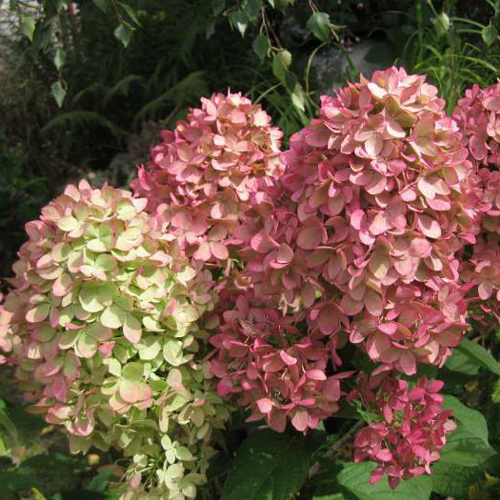
You can enjoy the view of the incredibly attractive candle-shaped inflorescences of the Magic Candle from the first half of July to mid-autumn. Magical candle blooms are always abundant. It is believed that the shade of the inflorescences of this plant can be influenced by regulating the acidity of the soil under the bush. So, pink and crimson colors are provided by the use of a soil with a slightly alkaline reaction. In the case of an increase in the acidity of the nutrient substrate, it is realistic to achieve a change in the indicated shade of inflorescences to blue and blue tones. More about how to change the color of hydrangea, you can find out in one of our articles.
Magic Candle belongs to frost-resistant varieties. The lowest temperature it can withstand without shelter is -29 ° C. Insect pests and fungal diseases rarely affect this type of paniculate beauty.
Features of growing and care
The most comfortable conditions for the successful growth and flowering of an ornamental shrub are good illumination or light partial shade. During the noon hours of summer days, the culture should not be exposed to direct sunlight. The cold gusty wind will not do the flower any good either.
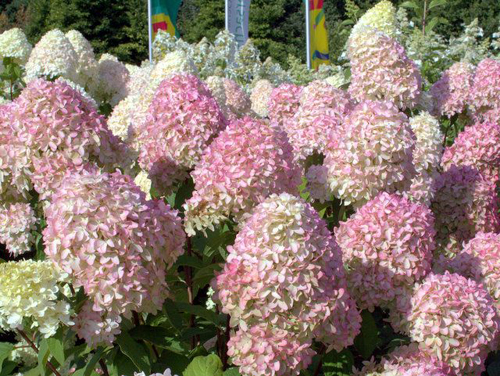
Magical candle should be planted in nutritious, moist soils. It is advisable to use for these purposes a soil consisting of 2 parts of leafy earth, the same amount of humus, 1 part of sand and 1 part of peat. For hydrangea cultivation, soils with a pH of 5.0 are preferred. Planting is carried out in the spring, but in the south it is possible in the fall. A mixture of humus and peat is placed on the bottom of a shallow planting pit (about 30 cm). The Magic Candle is deepened into the ground so that the root collar remains outside. Plants of this species are planted at a distance of 1 meter from each other.
You are dealing with a moisture-loving variety, so you will have to moisten the soil under the flower twice a week throughout the entire period of active growth and development of the crop. In hot summer, watering is done every two days. However, soil flooding should be avoided.To keep moisture in the soil longer, the ground under the hydrangea is mulched. Coniferous sawdust, pine needles, fallen leaves are used. It is also necessary to loosen the soil after watering.
Top dressing is carried out in two stages: in the spring, a mineral complex is applied, during the period of bud formation - phosphorus-potassium fertilizers. The plant needs pruning, during which weak and diseased branches are removed. If you wish, you can form from this culture not a bush, but a tree.
Use cases
Magic Candle fits perfectly into the garden design. Hydrangea is placed both in single plantings and in group compositions, where varieties related to this culture or other flowering perennials appear. A luxurious beauty is used to form hedges, mixborders are created with her participation. The main thing is that there is enough free space around the plant for its normal development.
